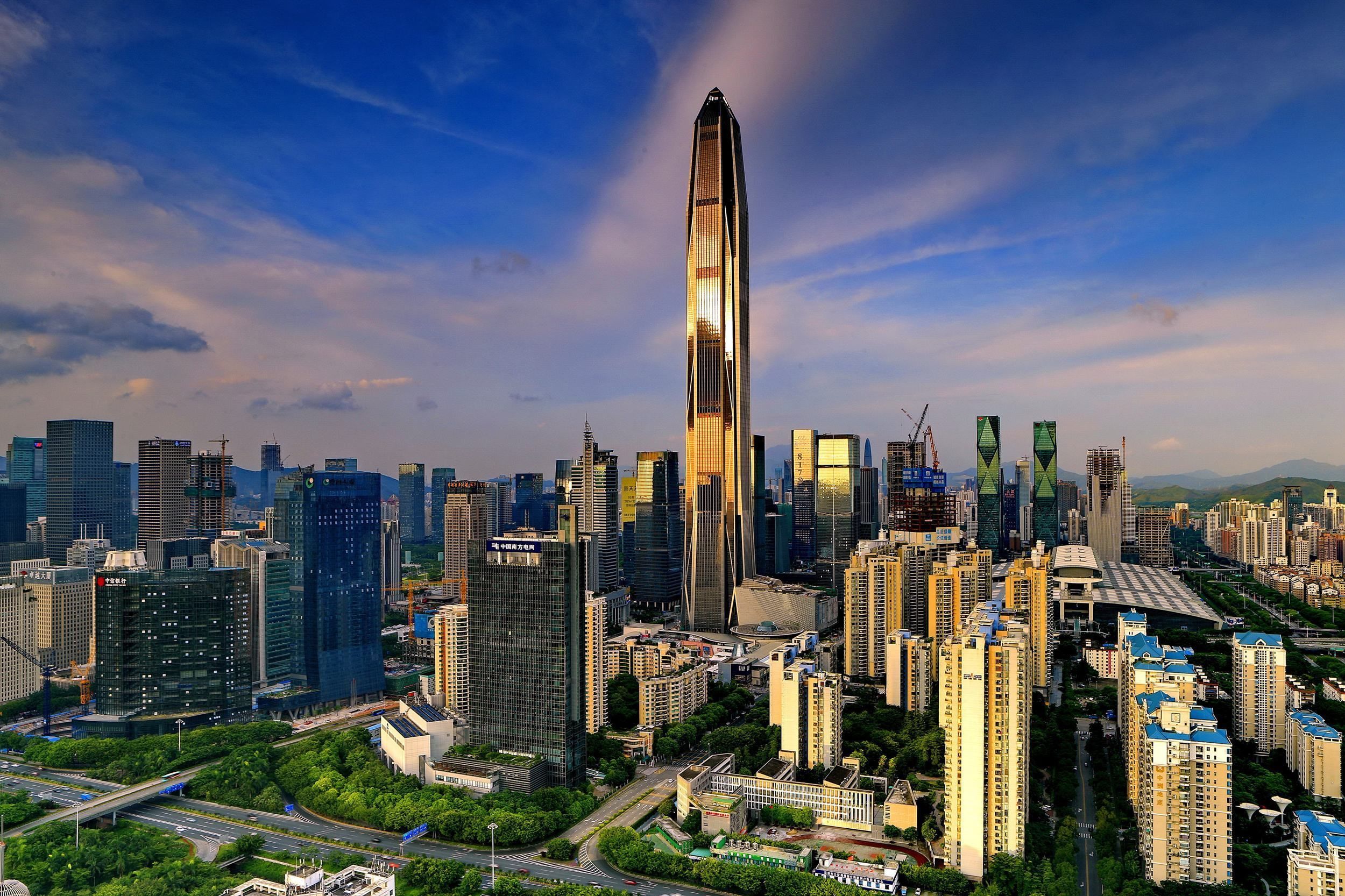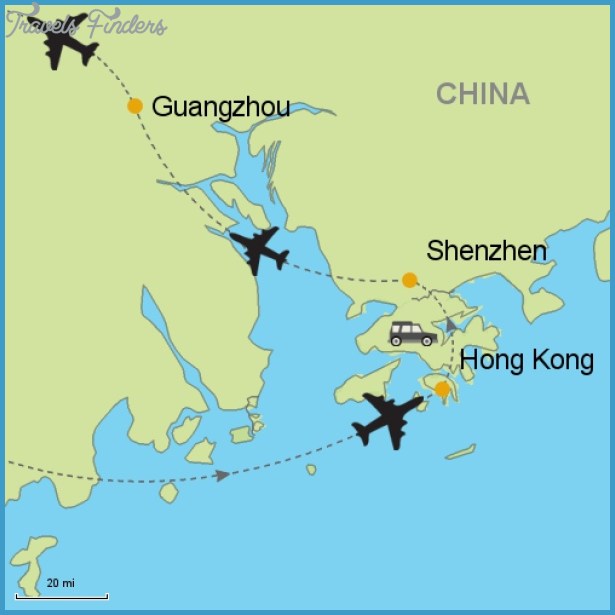The Basics of Traveling in these Two Cities
Transportation
Both cities offer efficient public transportation options for tourists. Hong Kong’s Mass Transit Railway (MTR) is particularly renowned for its clean, frequent services and easy-to-navigate maps and signage in English. In Shenzhen, while English signage may be more limited, the metro, buses and taxis remain very accessible for navigating the city. Apps like Google Maps can provide route planning and translation assistance.

Communication
While Mandarin Chinese is the primary language, English proficiency levels in the tourism industry make exploring both destinations manageable without fluency. In Hong Kong, English is an official language alongside Chinese, with extensive bilingual signage. Shenzhen sees growing secondary English usage, concentrated in major hotels, shopping centers and restaurants catering to international visitors. Translation apps provide an additional backup option for any linguistic barriers.
Safety Considerations
With millions of annual tourists, both Hong Kong and Shenzhen maintain very low crime rates. Still, common precautions apply like maintaining vigilance in public areas, using licensed taxis from trusted operators, and keeping documentation like identification and accommodation details handy just in case. Most locals exhibit friendliness towards visitors, willing to offer assistance through simple gestures if a language barrier emerges. Staying alert yet relaxed helps ensure worry-free travels.
Navigating the Urban Landscapes
Hong Kong’s Architectural Diversity
The former British colony presents a unique East-meets-West fusion of past and present. Neighborhoods like Central, Wan Chai and Causeway Bay showcase gleaming skyscrapers alongside neon-lit shops and trams winding between heritage buildings. Historic areas like Sheung Wan and Aberdeen preserve traditional Chinese architecture and vibrancy. Hong Kong Island, Kowloon and the New Territories each offer their own cultural flavors to explore on foot or via the superb metro system.
Shenzhen’s High-Tech Transformation
Once a modest border town, Shenzhen has rapidly urbanized into a global innovation powerhouse. Futuristic architecture and public spaces define the Nanshan and Futian central districts, home to startups, tech giants and the Shenzhen Stock Exchange. Further south, islands like Dongjiaotou and Xiaomeisha provide beach escapes. Beyond the city center, Yantian and Bao’an hold historical villages giving glimpses into village life before modernization. For a full view, the Ping’an Finance Center observation deck rewards visitors with breathtaking views stretching into Hong Kong.
Cultural Immersion and Leisure Activities
Hong Kong’s Rich Heritage
From neon-lit street markets to vibrant festivals, culture comes alive across Hong Kong. Top stops include the famous Victoria Harbour, replete with junk boat cruises and the iconic Sydney-Hong Kong ferry. Temple Street Night Market entertains with street performers. Heritage museums like Dr. Sun Yat-sen Museum and PMQ capture history. For natural beauty, the outlying islands of Lantau and Lamma offer hiking trails and secluded beaches perfect for soaking up island vibes.
Shenzhen’s Modern Energy
While more modern, Shenzhen hosts cultural highlights distinct from its older neighbor. Top among them is window shopping the sprawling modern malls of Futian, sampling street food stalls of Qianhai and hiking trails through Dapeng National Nature Reserve for coastal mountain vistas. The International Biotech Island also intrigues visitors with world-class lab tours combined with delightful seafood along nearby coastlines. After dark, neon-lit Windows of the World replica themes parks and energetic live music venues uplift spirits.
Culinary Adventures
Hong Kong’s Gourmet Scene
No trip is complete without indulging in Hong Kong’s world-famous cuisine. Top dishes include dim sum, wanton noodles, barbecue pork buns from dai pai dong outdoor kitchens, and cheesy egg tarts. Michelin-starred fine dining restaurants ranked among the best globally await in neighborhoods like Central and Wan Chai, often with harbor views. Seafood markets entice with fresh catch among bustling stalls. Local culinary traditions come alive through sampling across dining venues.
Shenzhen’s new Flavors
While borrowing from Guangdong Province’s rich culinary roots, Shenzhen puts its own modern spin with cosmopolitan fusion influences. International food halls at destinations like Mixc and Ocean Shopping Mall feature global cuisines. Popular street snacks include suantang bing crepes, baozi steamed buns and mango shaved ice. Upscale hotel buffets offer pan-Asian inspired tastes not found elsewhere. Fresh seafood from nearby Dapeng remains a specialty, complemented by tropical fruits grown in the region all year round.
Practical Travel Tips
Budget Accommodation Options
Budget or mid-range travelers will find convenient lodging throughout Hong Kong and Shenzhen close to public transport links. Examples include YHA Hong Kong youth hostels, small hotels near metro stations or via online booking sites. Dorm-style options save costs though private rooms exist. Shenzhen also hosts attractive capsule hotels for ultra-budget travelers exploring on foot.
Getting Around Between Cities
The Luohu border between the cities provides several crossing options. High-speed trains whisk travelers between Hong Kong and Shenzhen in just 30 minutes. The cross-border LuoHu metro connects without customs hurdles for seamless journeys. Budget travelers can use public buses between Shenzhen Luohu station and Hong Kong Hung Hom. Well-marked pedestrian walkways provide access on foot for those with Shenzhen visas.
Exchanging Currency
While Hong Kong and Shenzhen use different currencies, ATMs across the border accept international cards for withdrawals without fees. Authorized money exchanges provide competitive rates, monitoring for licensed locations. Visitors can also pay in major credit cards or Alipay/WeChat Pay depending on merchant support level. Planning currency needs and learning key phrases aids smooth transactions.
I hope this comprehensive guide helps you gain a solid understanding of how to navigate and make the most out of trips to these vibrant Asian cities, whether exploring independently or joining organized tours. Let me know if any other logistical questions arise before or during your upcoming travels!

 Travel Tips For Your Trip To Lima, Peru
Travel Tips For Your Trip To Lima, Peru